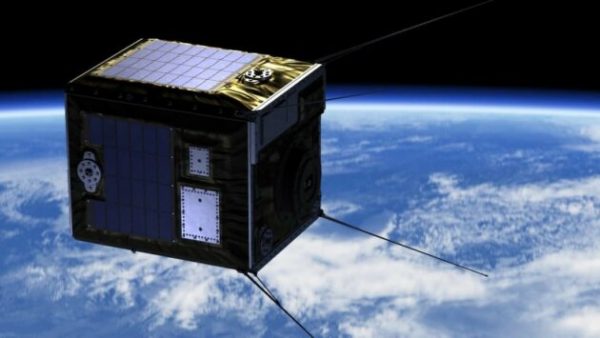Spaceflight and Rocket Lab will put a Japanese shooting-star satellite into orbit – GeekWire

Seattle-based Spaceflight says it’s handling the pre-launch logistics for a Japanese satellite that’s designed to spray artificial shooting stars into the sky.
Tokyo-based ALE’s spacecraft is just one of seven satellites due to be sent into orbit from New Zealand as early as Nov. 25, aboard a Rocket Lab Electron launch vehicle.
It’ll be the 10th Electron launch, earning the nickname “Running Out of Fingers.” It’ll also be the first launch to test the guidance and navigation hardware as well as the sensors that Rocket Lab will eventually use to help make the Electron’s first stage recoverable.
No recovery will be attempted during this mission.
The shooting-star satellite, ALE-2, is already making headlines in New Zealand. It’s designed to release particles from its sun-synchronous orbit below the International Space Station’s altitude, according to a timed schedule. When the particles re-enter Earth’s atmosphere, they’re supposed to burn up and create the appearance of meteors as seen from the ground.
In addition to the entertainment factor, ALE says scientists participating in the Sky Canvas project will be able to study the path of the particles during re-entry. That could lead to more accurate predictions of the path of satellites during orbital decay, and perhaps contribute to studies of weather and climate change.
“This launch gets us much closer to realizing the world’s first man-made shooting star,” ALE’s CEO, Lena Okajima, said in a news release. “We really appreciate Spaceflight`s support and attention to our mission, and we’re honored to take this big step with them.”
Some observers say the Sky Canvas project will be a distraction for astronomers as well as an attraction for skywatchers. Similar examples include the “Humanity Star” disco-ball satellite that Rocket Lab launched in 2018, and SpaceX’s first batch of 60 Starlink satellites.
When plans for the project came to light in January, The Sun said the mission’s primary purpose was to “wow the world’s mega-rich with dazzling light displays.” Others have said the justification for the display is “highly questionable” or “highly debatable on the moral, ecological, legal and political levels.”
The New Zealand Herald quoted the nation’s economic development minister, Phil Twyford, as saying he approved the payload for launch after receiving assurances from the New Zealand Space Agency that the project was safe, that there were no environmental concerns, and that “the light pollution impact is negligible.”
Spaceflight’s president and CEO, Curt Blake, focused on his company’s expertise rather than the glitter factor in today’s news release. Spaceflight is the launch logistics subsidiary of Seattle-based Spaceflight Industries, which also has the Black Sky geospatial data company under its wing.
“Our experience offering end-to-end launch services across multiple launch vehicles continues to be highly valued by organizations — regardless if they’re a newer customer like ALE, or an experienced constellation developer,” Blake said. “Our expertise and long-standing relationships provide reliability, flexibility, and the confidence that we’ll get customers to space as efficiently as possible. We’re really looking forward to taking ALE on our third Electron launch this year.”
Spaceflight’s two earlier launches took place in June and August.
The six other spacecraft to be sent into low Earth orbit, or LEO, during the “Running Out of Fingers” mission are 2-inch-wide PocketQube satellites, manufactured by Alba Orbital. Here’s how Rocket Lab describes the payloads:
- ATL-1: A payload from Advanced Technology of Laser from Hungary, designed to test a new thermal isolation material in space, run a thermal insulator material experiment and conduct DVB-T band spectrum monitoring.
- Fossasat-1: A satellite developed by Fossa Systems, a Spanish non-profit organization. The communications satellite uses low-power radio transmissions to provide IOT connectivity.
- NOOR 1A and NOOR 1B: These satellites from Stara Space will demonstrate LEO-to-LEO intersatellite link technology communicating with ground stations on Earth. Such technologies will be required to create a real-time global communications constellation in space.
- SMOG-P: A novel spectrum-monitoring payload built by students at the Budapest University of Technology and Economics in Hungary. Smog-P features a spectrum analyzer to measure artificial electromagnetic pollution from space.
- TRSI Sat: ACME AtronOmatic is a U.S.-German software application development company that provides flight tracking services to the aviation community and to mobile applications such as MyRadar, a weather radar application for mobile devices.





